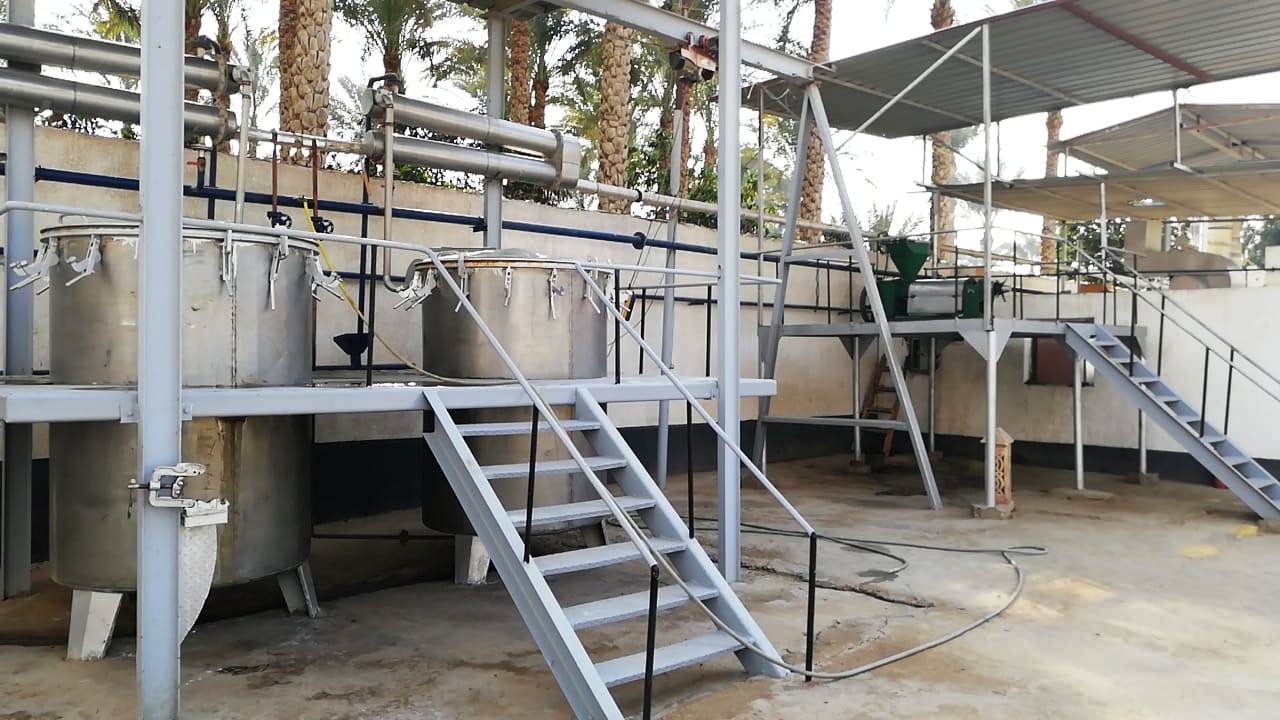Rose Oil (Egypt & India)
Login to view prices
Common name: Provence Rose
Latin name: Rosa centifolia L.
Family: Rosaceae
Other names: Engl.: cabbage rose, hundred-leaved rose, pale rose. Cabbage Rose [P,B,H,E], Franse Roos [D], French Rose [B,P,E], Gul [E], Gula Bagh [E], Gulab [E], Hundred-leaved Rose [H], Provence Rose [E], Red Provins Rose [H], Rosa Centofoglie [E], Rose [E], Rosier Gallique [E], Ward Juri Berri [E] Deu.: Zentifolie. Suom.: kartanoruusu. Pharm.: attar of rose, flores rosarum incarnatarum, otto of rose. Bot. Syn.: Rosa provincialis (non J.Herrm.), Rosa gallica centifolia ((L.)Regel.), R. centifolia var. cristata[B,P] R. centifolia var. muscosa[B,P] R. gallica[B,DUTCH,E,G,H,HORTIPLEX,P] R. gallica var. conditorum[G] R. gallica var. officinalis[G] R. gallica var. versicolor[G]
Botanical Origin:
Common name: Provence Rose
Latin name: Rosa centifolia L.
Family: Rosaceae
Other names: Engl.: cabbage rose, hundred-leaved rose, pale rose. Cabbage Rose [P,B,H,E], Franse Roos [D], French Rose [B,P,E], Gul [E], Gula Bagh [E], Gulab [E], Hundred-leaved Rose [H], Provence Rose [E], Red Provins Rose [H], Rosa Centofoglie [E], Rose [E], Rosier Gallique [E], Ward Juri Berri [E] Deu.: Zentifolie. Suom.: kartanoruusu. Pharm.: attar of rose, flores rosarum incarnatarum, otto of rose. Bot. Syn.: Rosa provincialis (non J.Herrm.), Rosa gallica centifolia ((L.)Regel.), R. centifolia var. cristata[B,P] R. centifolia var. muscosa[B,P] R. gallica[B,DUTCH,E,G,H,HORTIPLEX,P] R. gallica var. conditorum[G] R. gallica var. officinalis[G] R. gallica var. versicolor[G]
Description:
A decidious shrub growing to 1.5m. It is in flower from June to July, and the seeds ripen from August to November.
The scented flowers are (have both male and female organs) and are pollinated by Insects. The plant is self-fertile.
It has prickly stems and the leaves consist of two or three pairs of leaflets, with an odd one at the summit, closely attached to the common footstalk, which is rough, but without spines. The leaflets are ovate, broad, serrate, pointed, and hairy on the under surface. The flowers are large, hermaphrodite, with many petals, generally of a pale red color, and supported upon peduncles beset with short bristly hairs. The petals, which were recognized by the U. S. P., 1890, as pale rose, are roundish-obovate and refuse, or obcordate, pink, fragrant, sweetish, slightly bitter, and faintly astringent. They contain volatile oil, malic and tartaric acids, tannin, fat, resin, sugar, and a coloring matter which seems to be identical with that of the red rose. A rose water is often prepared from them by distillation
There is a layer of hairs around the seeds just beneath the flesh of the fruit. These hairs can cause irritation to the mouth and digestive tract if ingested
Range & Habitat:
The plant prefers light (sandy), medium (loamy) and heavy (clay) soils, requires well-drained soil and can grow in heavy clay soil. The plant prefers acid, neutral and basic (alkaline) soils. It can grow in semi-shade (light woodland) or no shade. It requires moist soil.
Succeeds in most soils, preferring a circumneutral soil and a sunny position.
Planting & Cultivation:
Seed. Rose seed often takes two years to germinate. This is because it may need a warm spell of weather after a cold spell in order to mature the embryo and reduce the seed coat. One possible way to reduce this time is to scarify the seed and then place it for 2 – 3 weeks in damp peat at a temperature of 27 – 32°C (by which time the seed should have imbibed). It is then kept at 3°C for the next 4 months by which time it should be starting to germinate.
Alternatively, it is possible that seed harvested ‘green’ (when it is fully developed but before it has dried on the plant) and sown immediately will germinate in the late winter. Seed sown as soon as it is ripe in a cold frame sometimes germinates in spring though it may take 18 months. Stored seed can be sown as early in the year as possible and stratified for 6 weeks at 5°C. It may take 2 years to germinate.
Prick out the seedlings into individual pots when they are large enough to handle. Plant out in the summer if the plants are more than 25cm tall, otherwise grow on in a cold frame for the winter and plant out in late spring.
Cuttings of half-ripe wood with a heel, July in a shaded frame. Overwinter the plants in the frame and plant out in late spring.
Cuttings of mature wood of the current seasons growth. Select pencil thick shoots in early autumn that are about 20 – 25cm long and plant them in a sheltered position outdoors or in a cold frame. The cuttings can take 12 months to establish but a high percentage of them normally succeed.
Division of suckers in the dormant season. Plant them out direct into their permanent positions.
Layering. Takes 12 months.
Grows well with alliums, parsley, mignonette and lupins. Garlic planted nearby can help protect the plant from disease and insect predation. Grows badly with boxwood.
Plants produce a few suckers.
Hybridizes freely with other members of this genus.
Plants in this genus are notably susceptible to honey fungus.
Harvesting and Preparing for the Market:
Harvesting starts in the second year after planting, reaching its maximum in the fifth year. After twelve years the productivity of a planting declines rapidly.
The harvest takes place in May, very early every morning (from 4 to 8 a.m.), before the dew has disappeared from the flowers. One harvester can pick from 4 to 10 kg of roses per hour.
For oil production , the roses should be processed as soon as possible after collection, otherwise they will wither and give a poor yield on extraction.
They should be collected when the flower is fully expanded but has not begun to fall. Their fragrance is impaired but not lost by drying. They may be preserved for a considerable time by compressing them with alternate layers of common salt in a well-closed vessel, or beating them with twice their weight of that substance.
Yield of Flowers:
On the average, a single rose bush produces 250 g of flowers per season, a yield of 3000 kg of roses per hectare is considered very satisfactory.
Method of Extraction:
By Steam Distillation, Solvent extraction for Concrete and Absolute preparation.
Unlike the Bulgarian Rose, Rosa centifolia flower oil can not economically isolated by steam distillation. Only limited quantities are used for distillation for the production of the fragrant rose water which is so popular in Mediterranean and Latin countries. So the bulk of the natural flower oil industry is in the concretes and absolutes preparation.
French rose oil industry: yield of concretes reach 0.17 to 0.27%, the concrete gives from 55 to 65 % of alcohol-soluble absolute, and contain from 25 to 32% of steam-volatile oil. From 400 to 500 kg of Rosa centifolia L. are required to produce 1 kg of concrete; the latter yields from 500 to 600 g of absolute.
[1] Source: Simon, J.E., A.F. Chadwick and L.E. Craker. 1984. Herbs: An Indexed Bibliography. 1971-1980. The Scientific Literatureon Selected Herbs, and Aromatic and Medicinal Plants of the TemperateZone. Archon Books, 770 pp., Hamden, CT. The Essential Oils. By Ernest Guenther. 1950
Additional information
| Weight | N/A |
|---|---|
| Dimensions | N/A |
| Oil Purity | 100% Natural & Pure without any chemical, flavor, food additive or carrier. |
| Ship from | China, Egypt |
| Country of Origin | India, Egypt |
| Cultivation Type | Organic Certified, Conventional |
| Oil Bulk Packaging | 1 Kg Aluminum Bottle, 5 Kg Aluminum Bottle |
| HS Code | 33012938 |
| CAS Number | 8007-01-0 |
| Oil Documentation Available | Allergen Free Certificate, Bovine Spongiform Encephalophathy (BSE) Certificate, Certificate of Analysis (COA), GMO Certificate, GRAS Status Statement, Halal Certificate, Herbal Origin Statement, KOSHER Certificate, Manufacturing Flow Chart, Material Safety Data Sheet (MSDS), Organic Certificate, Pesticide Residual Certificate, Researches & Studies, Technical Data Sheet (TDS), WADA Prohibited list Statement |
-
-
Login to view prices
-
Login to view prices
-
Login to view prices
-
Login to view prices









